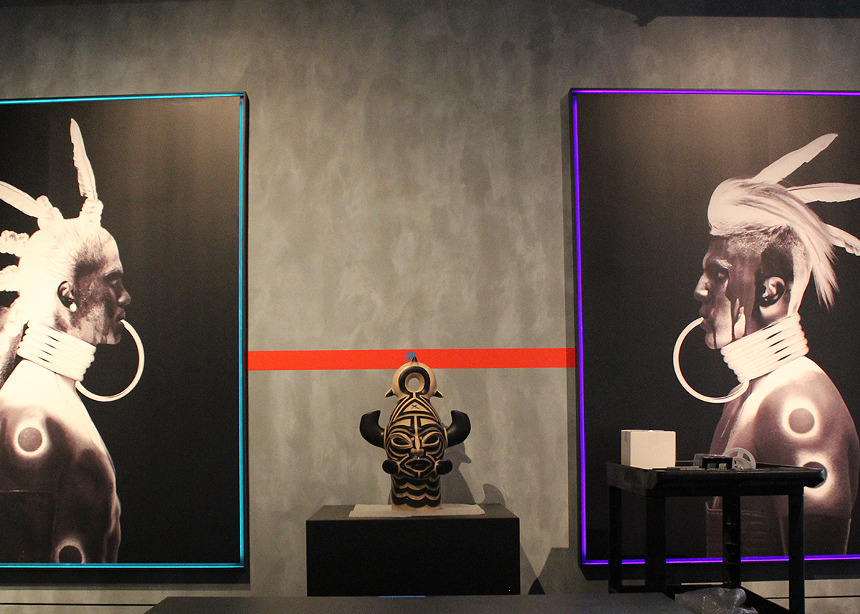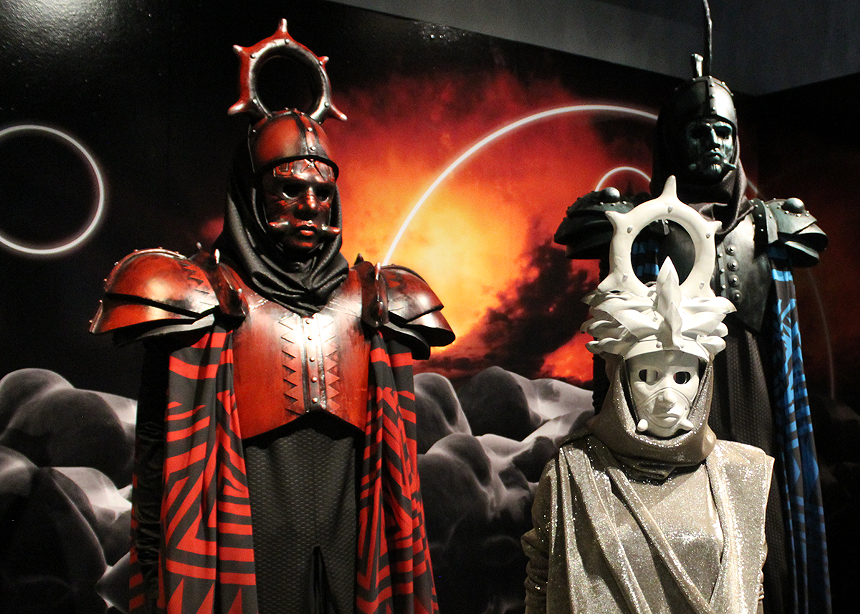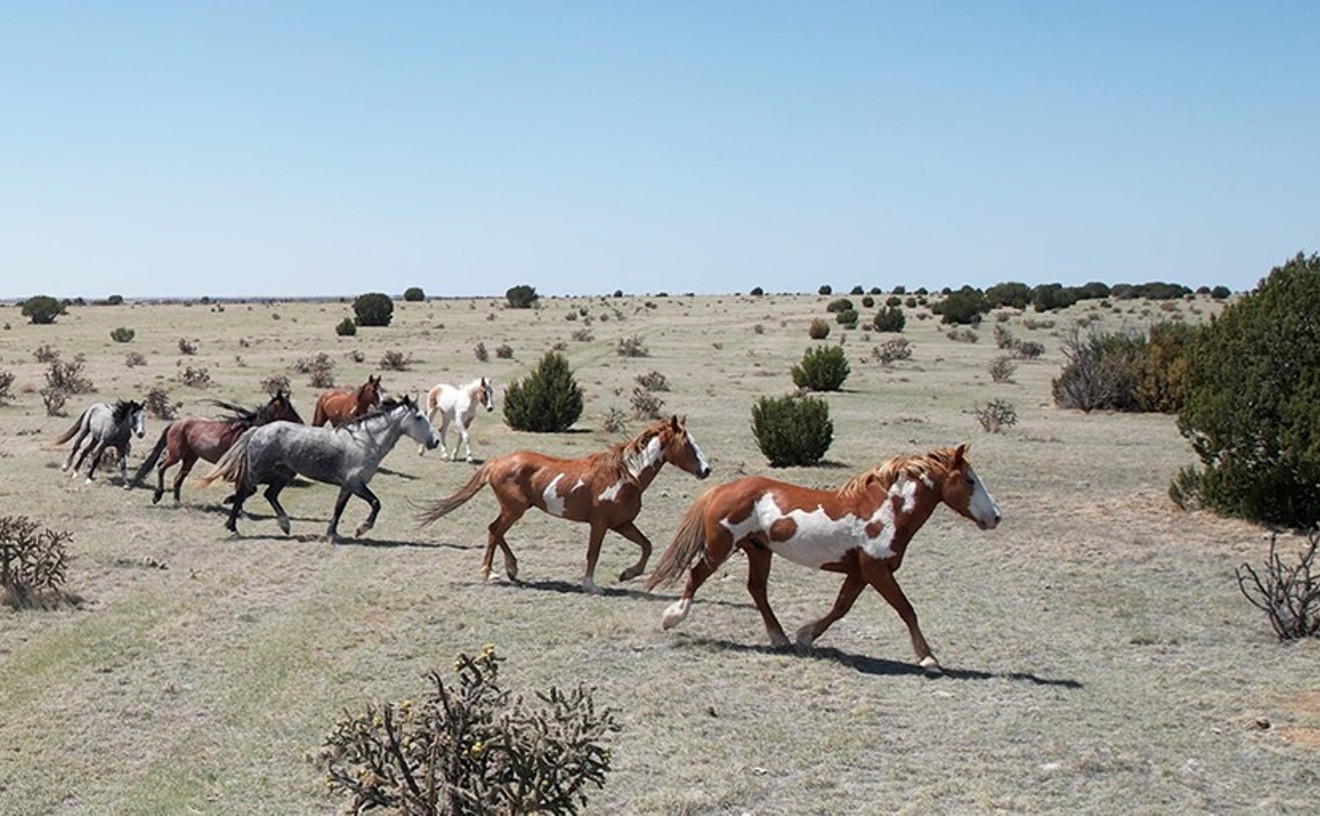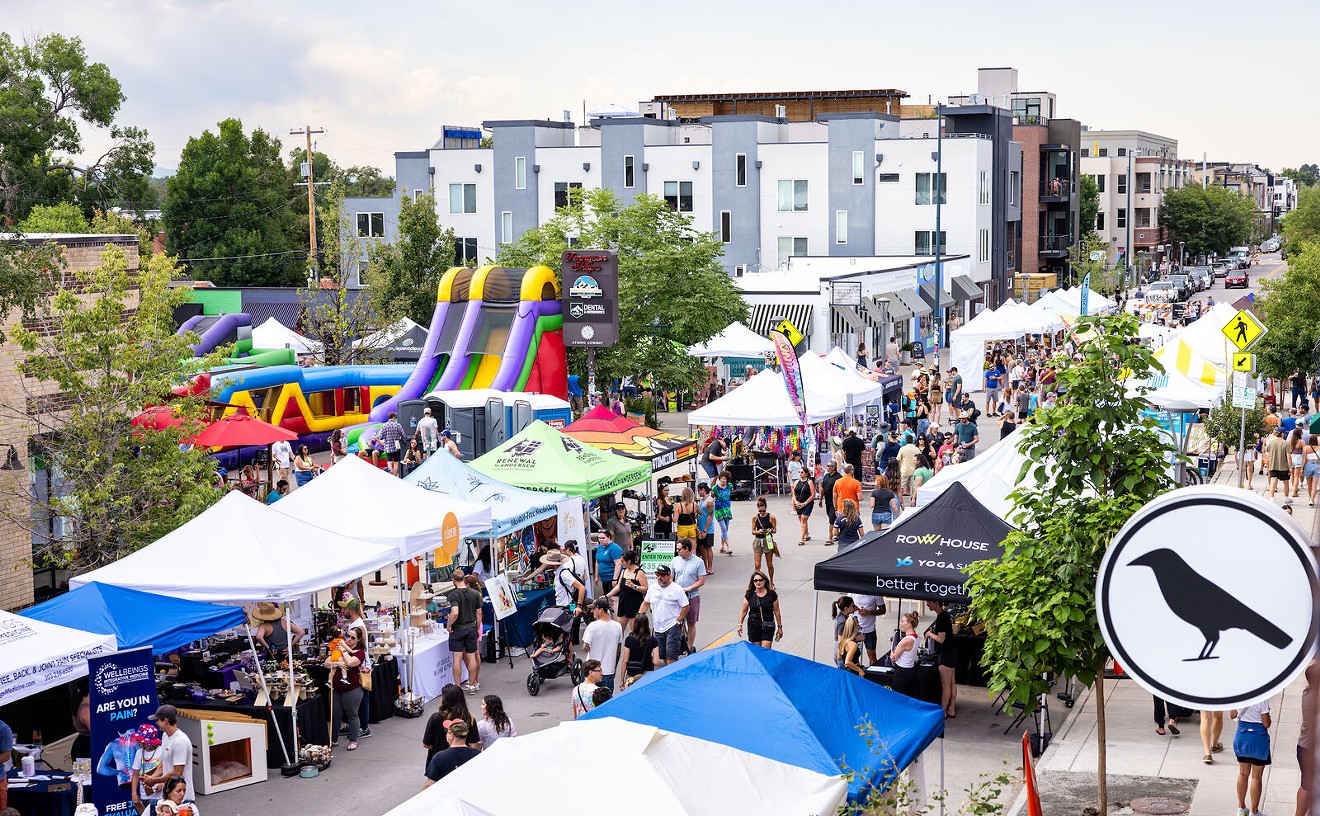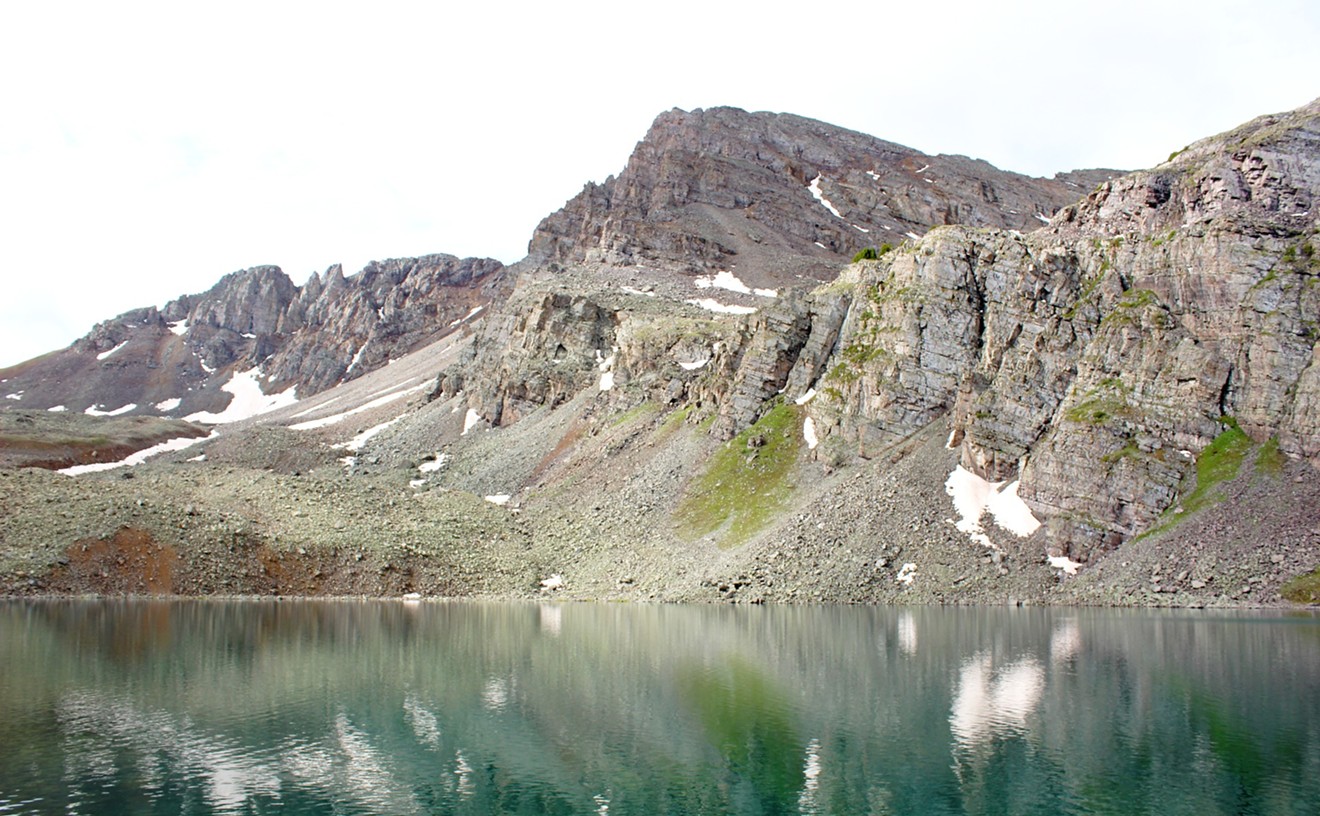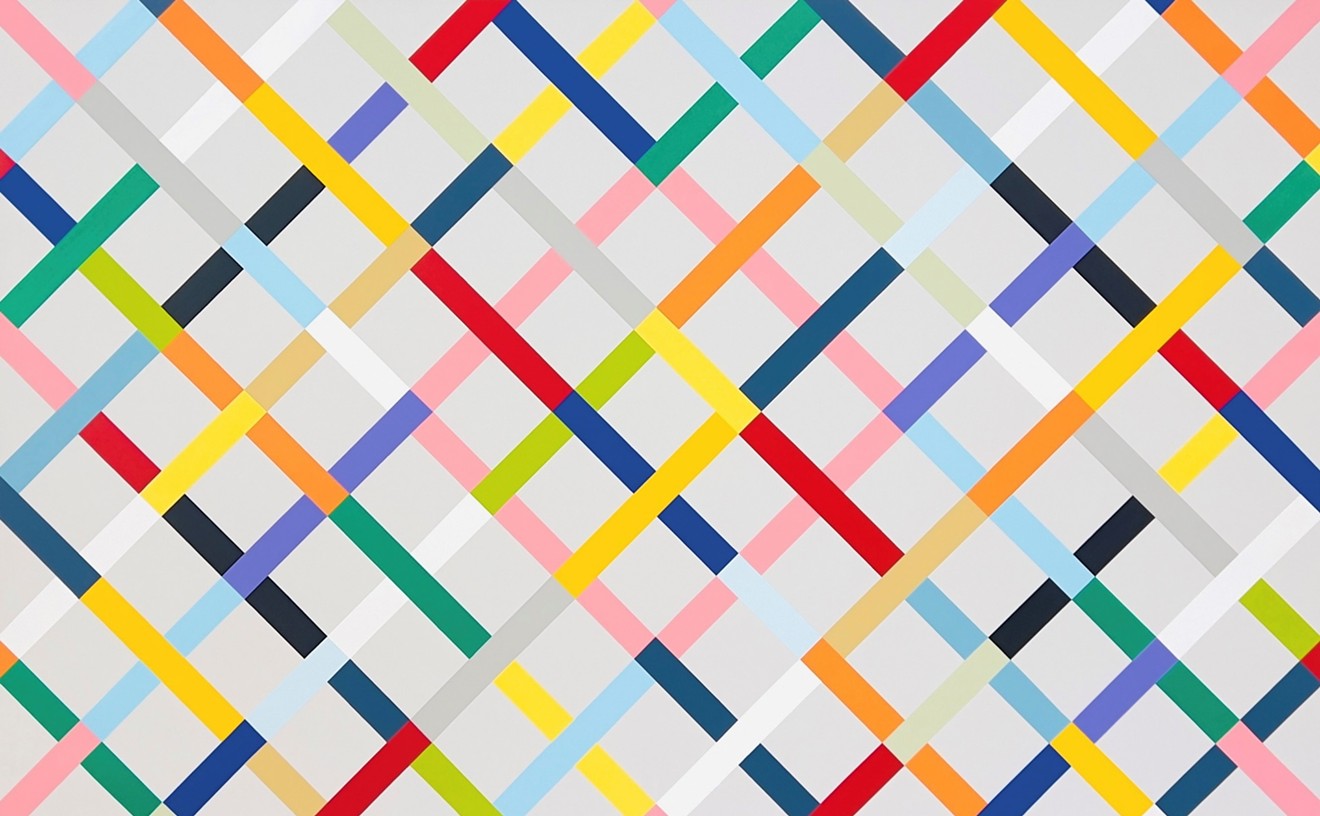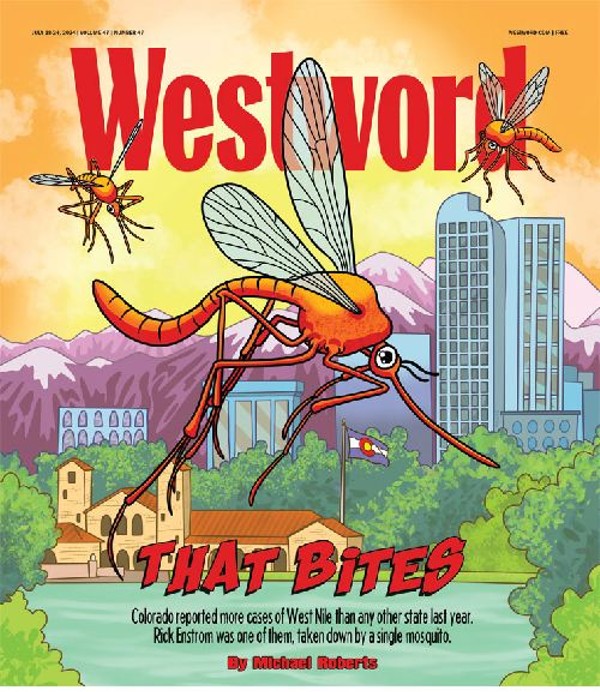Virgil Ortiz considers himself a conduit of his ancestors.
Hailing from Cochiti, New Mexico, Ortiz makes pottery the same way his Indigenous Pueblo ancestors have for generations: digging his own clay, making paint from wild spinach, and firing his creations over aspen and cedar in an open pit. Perhaps the most recognized living practitioner of this ancient art, Ortiz also works in storytelling, photography and fashion design.
He's also deeply invested in his region's history with the 1680 Pueblo Revolt, which occurred when the Pueblo tribe in present-day New Mexico expelled Spanish colonizers, who had been terrorizing the Pueblos for more than a century. It's been called the first American Revolution, and while Ortiz has discussed it in exhibitions around the world, he's realized the place that needs educating the most is the country where it happened.
"When I do shows in Europe — say, Italy, Prague or Amsterdam — [everyone knows] exactly what I'm talking about," he says from his home in Cochiti. "But when I come to the States and do shows...no one knows what I'm talking about. Even when I do shows where most of it took place — in Santa Fe, here in New Mexico — people still don't know. That's been my mission for over two decades now: to educate globally about the revolt using artwork."
His newest effort is Revolt 1680/2180: Runners + Gliders, which debuts at the History Colorado Center this Saturday, May 13, for an extended run. It's an innovative, definition-defying exhibit that combines pottery artifacts from the museum's collection with Ortiz's modern blend of ceramics and visual art. Created in collaboration with the History Colorado team, it also employs a truly unique fusion of elements (pottery, fashion, photography and even new-school tools like projection mapping) to reveal the history of the uprising, but with a sci-fi twist: Viewers will see it occur in two different time dimensions.
The show was always conceived as a time-spanning combination of Ortiz's work with museum holdings, including nineteenth-century items from the same Cochiti tradition. "We were all pretty big fans of Virgil's work and were familiar with it," explains History Colorado exhibit developer and historian Jeremy Morton, who worked closely with Ortiz as lead on the project. "We had what we thought was a pretty good idea, of having his contemporary Puebloan pottery in conversation with historic ceramics from our collection."
But as Ortiz began spinning out an even more fantastic dual-time narrative, using a characteristically wide range of other formats, it became an exciting challenge for Morton and his team to incorporate augmented-reality elements.
Visitors will use such modern technology to unlock an immersive, layered experience of the battle repeating itself in the far-off future of 2180, even as they learn about the real events of 1680. Both narratives center on two characters that were vital to the revolt's success: Tesuque Pueblo twins Omtua and Catua.
Back in 1680, Omtua and Catua were runners — "people that really helped" make the revolt happen, explains Ortiz. After decades of brutal Spanish colonial rule, a charismatic leader named Po'Pay united the Pueblo communities to cast the invaders out, but he needed a way to ensure that the far-flung settlements all acted simultaneously.
"He sent runners from the northern Pueblos to the southern Pueblos...handing off knotted cords to their leaders," says Ortiz. These deer-hide ropes carried by Omtua and Catua were actually a secret timing system: a countdown to the revolution. "They instructed them to untie one knot every morning, and when the last knot was untied, all the Pueblos rose up and pushed out the invaders."
Unfortunately for the brave runner twins, the secret leaked out early; they were captured and executed. "They were the first to give their lives to the cause of the revolt," notes Ortiz. In the artist's retelling, he's able to bring them back as "gliders," who are again called on to fight for freedom in 2180. "I wanted to pay respect to them and to let everybody know what they did, and to show them in two different time dimensions."
Ortiz's time-hopping storytelling is influenced by a lifelong love of science fiction, which began when he saw Star Wars at age seven. "I learned all the characters, where they live, what kind of ships they cruised in, how they spoke, how they dress, especially," he remembers. "It made a huge impact on me." With his long-running Revolt series, of which Runners + Gliders is only the latest chapter, he created a densely populated, Indigenous futurist saga.
Ortiz wants to create an adventure that diverse audiences can connect to and learn from. "I want to reach the younger demographic, like how I was affected as a kid by characters and movies, so eventually people realize they're getting a lesson in history without knowing it," he explains.
And Runners + Gliders will be a history lesson that's different from anything visitors have experienced. "You can walk into the show and look at everything," Ortiz says, "but then you walk through it again and...you can see a completely different show the second time. When you point your phone at some of the locations that are all mapped out in the exhibition, the photographs will come alive: You'll see floating ten-foot-tall ceramic busts that are levitating and rotating, you'll see ten-foot-tall soldiers, one of the Gliders will appear. ... It's just a different way to experience a show."
Ortiz collaborated on the projections and mapping with Sebastian Bustos, an architect and AI/VR specialist from Albuquerque. "I've done a little bit [of VR] in the past, but I'm not nearly as educated as Sebastian is," admits Ortiz. "I wanted to really bring in that side, a new way of looking at exhibitions."
History Colorado's Morton confirms the show is unlike anything else in the museum scene, and that's a good thing. "It does a great job of fusing the past, the present and the future, fusing art with history [through] so many multi-sensory elements and storytelling techniques combining. ... That really makes it a unique way to talk about history and, more specifically, Puebloan history," he says.
Ortiz is looking forward to joining Bustos, Morton and the rest of the History Colorado team in Denver at an opening ceremony Thursday, May 18. For him, celebrating their collective work is an opportunity to "let people know [Puebloan artists] are still here, living, thriving and creating."
Virgil Ortiz Revolt 1680/2180: Runners + Gliders opens Saturday, May 13, History Colorado Center, 1200 Broadway. Opening Reception is 6 to 8 p.m. Thursday, May 18. Get tickets here.
[
{
"name": "Air - MediumRectangle - Inline Content - Mobile Display Size",
"component": "12017618",
"insertPoint": "2",
"requiredCountToDisplay": "2",
"watchElement": ".fdn-content-body",
"astAdList": [
{
"adType": "rectangle",
"displayTargets": "mobile"
}
]
},{
"name": "Editor Picks",
"component": "17242653",
"insertPoint": "4",
"requiredCountToDisplay": "1",
"watchElement": ".fdn-content-body",
"astAdList": [
{
"adType": "rectangle",
"displayTargets": "desktop|tablet"
},{
"adType": "rectangle",
"displayTargets": "desktop|tablet|mobile"
}
]
},{
"name": "Inline Links",
"component": "18838239",
"insertPoint": "8th",
"startingPoint": 8,
"requiredCountToDisplay": "7",
"maxInsertions": 25
},{
"name": "Air - MediumRectangle - Combo - Inline Content",
"component": "17261320",
"insertPoint": "8th",
"startingPoint": 8,
"requiredCountToDisplay": "7",
"maxInsertions": 25,
"watchElement": ".fdn-content-body",
"astAdList": [
{
"adType": "rectangle",
"displayTargets": "desktop|tablet"
},{
"adType": "rectangle",
"displayTargets": "desktop|tablet|mobile"
}
]
},{
"name": "Inline Links",
"component": "18838239",
"insertPoint": "8th",
"startingPoint": 12,
"requiredCountToDisplay": "11",
"maxInsertions": 25
},{
"name": "Air - Leaderboard Tower - Combo - Inline Content",
"component": "17261321",
"insertPoint": "8th",
"startingPoint": 12,
"requiredCountToDisplay": "11",
"maxInsertions": 25,
"watchElement": ".fdn-content-body",
"astAdList": [
{
"adType": "leaderboardInlineContent",
"displayTargets": "desktop|tablet"
},{
"adType": "tower",
"displayTargets": "mobile"
}
]
}
]


